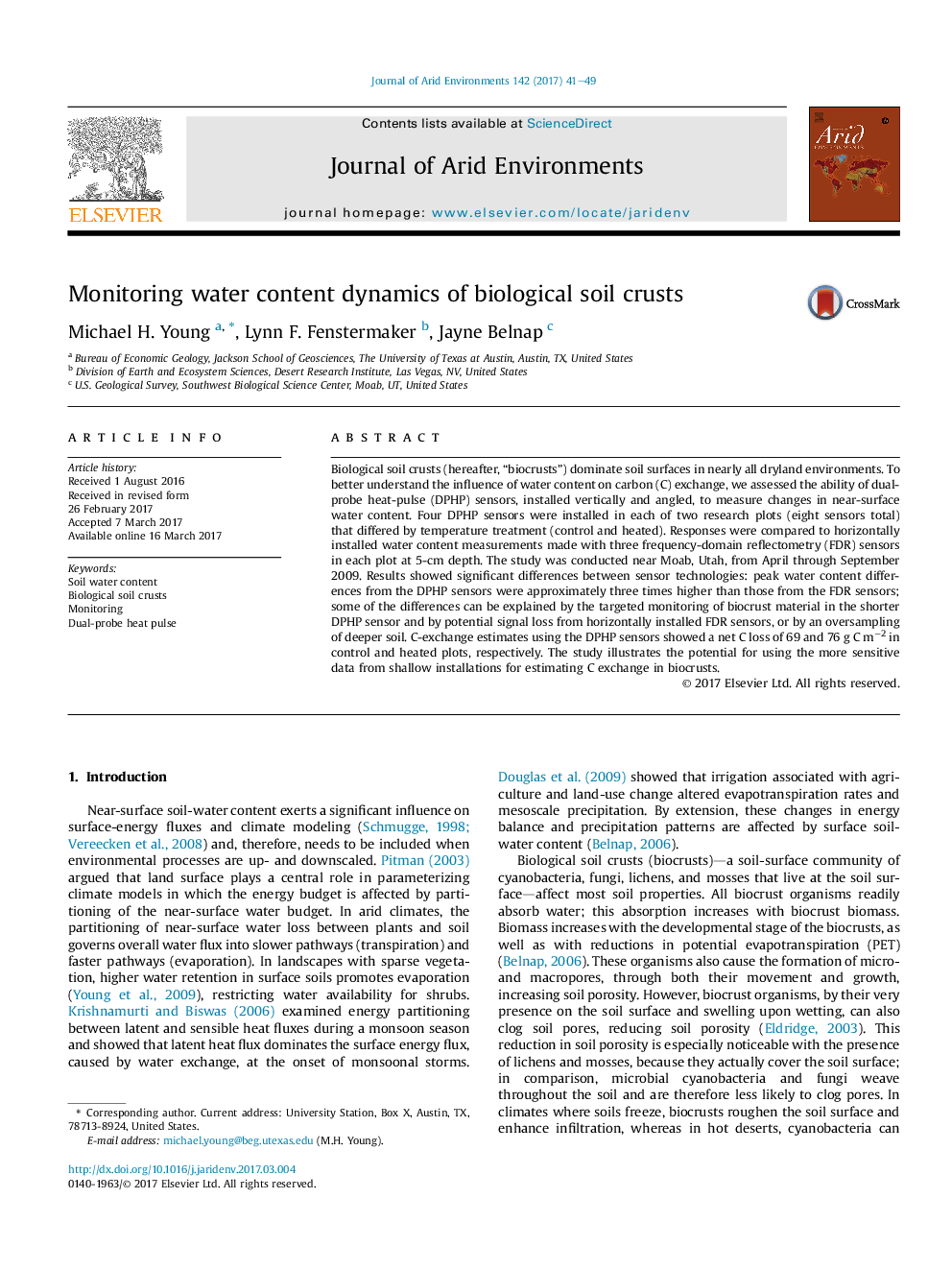| کد مقاله | کد نشریه | سال انتشار | مقاله انگلیسی | نسخه تمام متن |
|---|---|---|---|---|
| 5744295 | 1618217 | 2017 | 9 صفحه PDF | دانلود رایگان |
- Soil moisture is important for understanding and estimating carbon exchange in biological soil crusts, but technologies available for measuring water content of biocrusts are limited.
- We describe a high-resolution (thermal) method for monitoring biocrust water content, and show this method is more sensitive than an electromagnetic method installed in the same plot.
- The monitoring period extended throughout a 160-d field campaign, from which net carbon exchange was estimated.
- The monitoring method proved to be robust and to lead to exchange rates in line with chamber measurements.
- The thermal method represents a simpler, robust, and accurate way to estimate water content of biological soil crusts.
Biological soil crusts (hereafter, “biocrusts”) dominate soil surfaces in nearly all dryland environments. To better understand the influence of water content on carbon (C) exchange, we assessed the ability of dual-probe heat-pulse (DPHP) sensors, installed vertically and angled, to measure changes in near-surface water content. Four DPHP sensors were installed in each of two research plots (eight sensors total) that differed by temperature treatment (control and heated). Responses were compared to horizontally installed water content measurements made with three frequency-domain reflectometry (FDR) sensors in each plot at 5-cm depth. The study was conducted near Moab, Utah, from April through September 2009. Results showed significant differences between sensor technologies: peak water content differences from the DPHP sensors were approximately three times higher than those from the FDR sensors; some of the differences can be explained by the targeted monitoring of biocrust material in the shorter DPHP sensor and by potential signal loss from horizontally installed FDR sensors, or by an oversampling of deeper soil. C-exchange estimates using the DPHP sensors showed a net C loss of 69 and 76 g C mâ2 in control and heated plots, respectively. The study illustrates the potential for using the more sensitive data from shallow installations for estimating C exchange in biocrusts.
Journal: Journal of Arid Environments - Volume 142, July 2017, Pages 41-49
